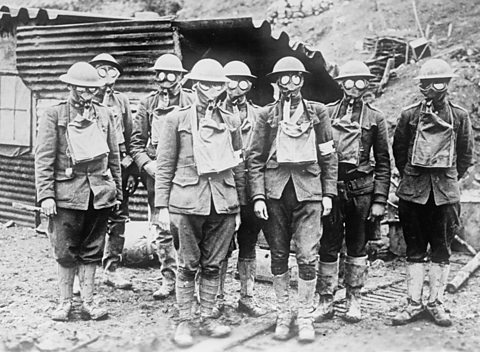Introduction: Was the USA involved in World War One?
At the outbreak of World War One, the United States of America decided not to involve itself in what it saw as a European conflict.
However, some major events brought an end to this neutral position. Eventually, in 1917, the American's joined the war on the side of Britain and France.
The arrival of money, ammunition, and millions of soldiers helped tilt the balance of the war and led to the defeat of the German Empire.
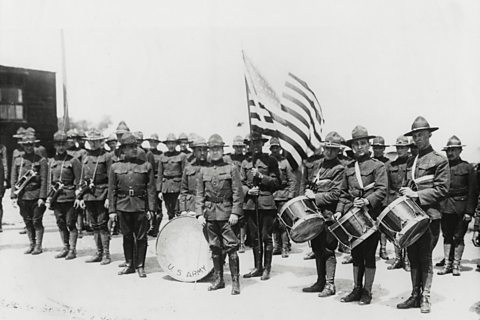
How did the USA react to the outbreak of World War One?
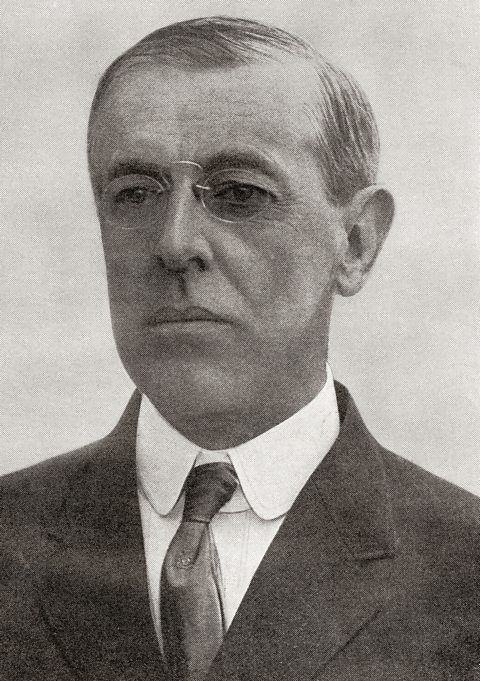
When the First World War broke out in 1914, American President, Woodrow Wilson, resisted the appeals of the Allies to join the war against Germany.
In his mind, there was little to no appetite for war against Germany in the United States. The policy of the United States was one of NeutralityA political decision that means that a country refuses to take sides during a conflict..
Popular opinion in America was divided. There was a strong view that the war was a European conflict that did not involve America.
Beyond that, there were many groups who had strong links to different countries in Europe. Each of these groups had very different opinions.
German Americans and Scandinavian Americans largely wanted America to stay neutral.
Others who had family connections to nations such as France, Belgium, and Britain, urged America to join the war against Germany.
Over time, popular opinion shifted and, in April 1917, the USA declared war on the German Empire.
American entry into the war can be attributed to two key events which Germany was responsible for:
- the sinking of the passenger ship, the RMS Lusitania, which led to American deaths
- the Zimmermann Telegram, where Germany sought an alliance with Mexico, promising the Mexicans southern parts of the USA in return

The sinking of the RMS Lusitania, 1915

Although the USA took a neutral position, Britain remained one of America’s key trading partners.
This partnership began to create tension between the United States and Germany. Germany were trying to defeat Britain by starving them into submission.
The German fleet had placed mines along shipping routes between the USA and Britain. Germany had a policy of unrestricted submarine warfare. If a ship was carrying supplies to one of its enemies, be that weapons or food, then it was seen as a legitimate target.
On 7 May 1915, the cruise liner RMS Lusitania was nearing the end of a journey from New York to Liverpool when a German submarine fired a torpedo without warning. The Lusitania sank, and 1, 198 passengers and crew members were killed.
Before the Lusitania left New York, the German Embassy had placed advertisements in American newspapers, reminding Americans that any ship which flew the Union Jack was a fair target in their eyes.
128 Americans were killed in the attack. This led to an increase in anti-German feeling in the United States. American politicians began to seriously discuss the option of war against Germany.
Then, in March 1916, a cross-Channel ferry, SS Sussex, was torpedoed by a German submarine. Over 50 people were killed. 75 US citizens were on board, and although none were killed, the incident turned public opinion in America against Germany.
President Wilson issued a warning to Germany that if it was ever determined that the Germans had sunk the ship without proper cause, the United States would break diplomatic ties and enter the war on the side of the Allies.
Germany, intimidated by this threat, agreed the Sussex pledge that halted their policy of targeting merchant ships without warning, and America remained neutral.

The Zimmermann Telegram, 1917
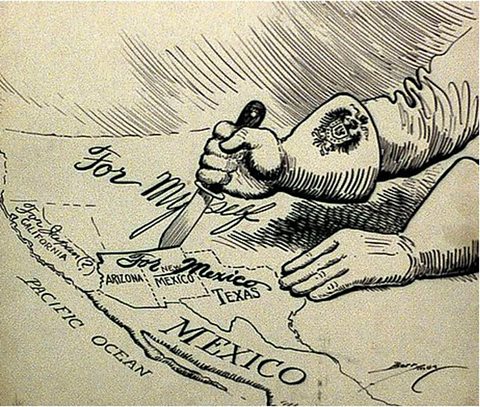
In early 1917 British codebreakers intercepted a TelegramA communication system where messages were electronically transmitted over distance through wires and then printed out at the destination. from the German Foreign Minister, Arthur Zimmermann, to the German Minister to Mexico, Heinrich von Eckardt.
This telegram (known as the Zimmermann Telegram) discusses Germany's plan to resume their policy of unrestricted submarine warfare. Once again all ships which sailed into the war zone were at risk of being sunk.
If this led to America entering the war, Germany proposed an alliance between Mexico and Germany, and promised to support Mexico taking control of land in the south of the United States as reward if they were victorious.
The interception of the Zimmermann telegram was not in itself enough to convince President Wilson to join the war. However when Germany restarted unrestricted submarine warfare, he was left with little choice and entered the war in April 1917.

WW1: America at war
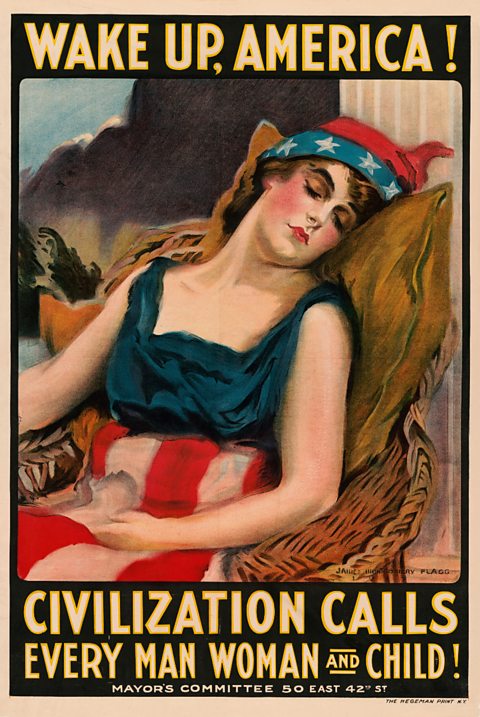
The entry of the United States into the war proved to be a tipping point in the conflict for several reasons:
- America provided millions of soldiers to fight alongside British and French troops
- America provided ammunition, vehicles, and supplies to the Allied forces
- America provided vast amounts of money to fund the British and French war effort
Before American entry into the war, it seemed as if the German Empire had the upper hand. America's involvement soon made the defeat of Germany a realistic possibility.
Militarily, American soldiers played important roles in two major campaigns late on in the war:
- the German Spring Offensive, March 1918
- the Hundred Days Offensive, August 1918

The German Spring Offensive, 1918
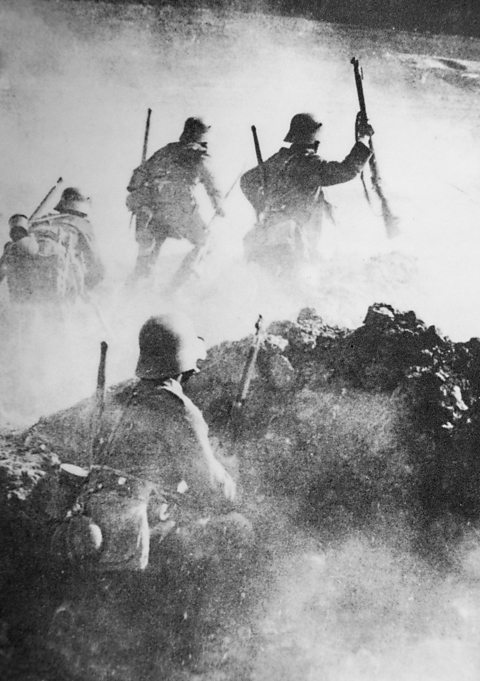
In October 1917, the The Bolshevik RevolutionThe Bolshevik Revolution was an event in 1917 in the wider Russian Revolution that saw the Russian royalty overthrown and replaced by the leadership of Vladimir Lenin. had led to the large Russian army pulling out of the war. They had been allies to the French and British, so this was a boost to the Germans.
As well as weakening the French and British, it allowed Germany to move the soldiers that had been fighting the Russians on the Eastern Front to the Western Front to fight the French and British.
To make the most of this temporary advantage, in March 1918, the German generals decided to launch a series of ferocious attacks on the British and French armies. These attacks became known as the Spring Offensive.
While the Spring Offensive was risky, leading German generals, such as Erich Ludendorff, believed that it was Germany's last chance for a good outcome from the war. If they waited until the Americans arrived, they would be outnumbered and would lose.

Outcome of the Spring Offensive
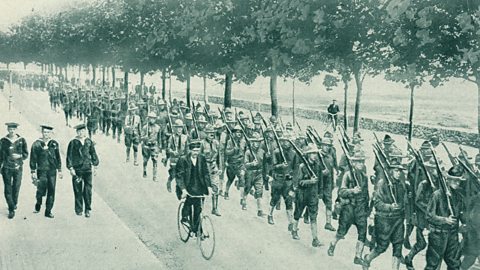
During the first days of the Spring Offensive, the Germans advanced further than they had since the beginning of the war and inflicted heavy losses on the Allied forces. But they were unable to inflict the final defeat that they had hoped for.
The German Army struggled to resupply its soldiers. This caused their advance to slow down. The Allies concentrated their defences on strategically important sites, such as ports and rail routes. Much of the land won by Germany was of little importance.
So while the Spring Offensive proved successful for Germany, they had suffered heavy losses and the gains they had made were of little advantage. And By July 1918, the arrival of American soldiers meant that German was outnumbered.

The Hundred Days Offensive, 1918

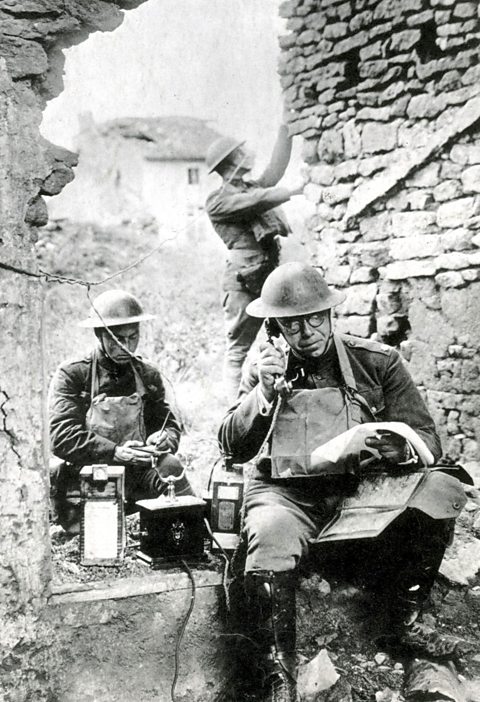
The Allies launched their own counter attack at the beginning of July 1918, and the Battle of Amiens marked the start of a campaign known as the Hundred Days Offensive.
This campaign saw the Allies on a constant advance and whilst they did not reach the borders of Germany, they were able to push the German Army into a deep retreat.
One of the key factors in this success was the Allies ability to use fresh American troops to replace wounded French and British soldiers.
US forces also fought and won battles in their own right.
In September 1918, the American Expeditionary Force defeated a German force at the strategically important town of Saint-Mihiel in north-eastern France.
The battle was the first time the United States had led a major offensive in WW1, and its success raised the stature of the American Army.
All the territory the Germans had gained during the Spring Offensive was soon lost and soon it became clear that, for the Germans, the war was unwinnable.

How did World War One end?
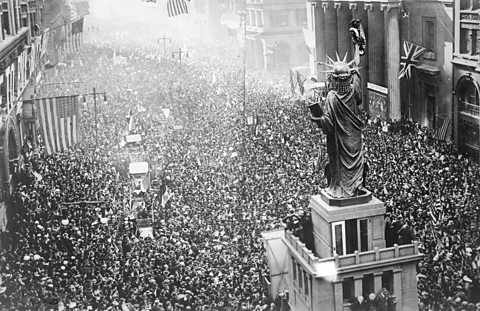
By October 1918, it became clear to Germany's leaders that they could not continue the war.
After unrest among the German armed forces, the German monarch, Kaiser Wilhelm II, abdicated and Germany became a parliamentary republic.
At the same time, Germany began to negotiate peace with the French, British, and Americans.
At 11am on 11th November 1918, an ArmisticeAn armistice is an agreement between two or more nations to cease fighting for a period of time. was agreed between the German leadership and the Allies.
The hostilities of World War One officially came to an end.
Test your knowledge
More on World War One
Find out more by working through a topic
- count1 of 9
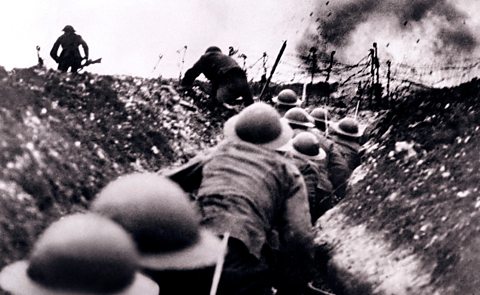
- count4 of 9
